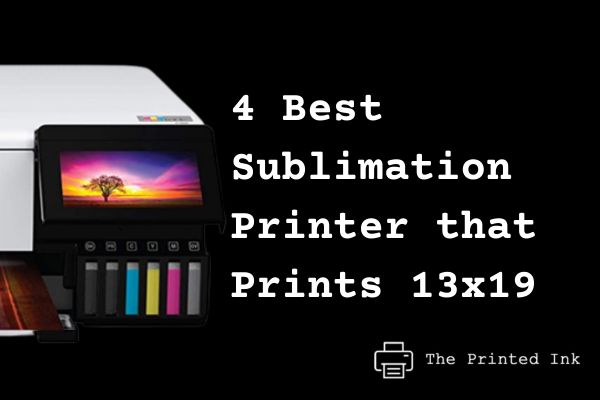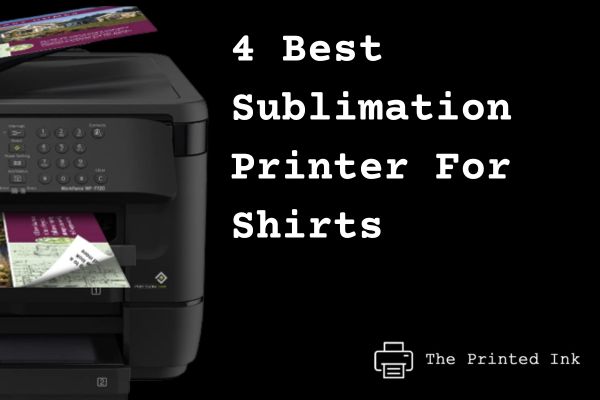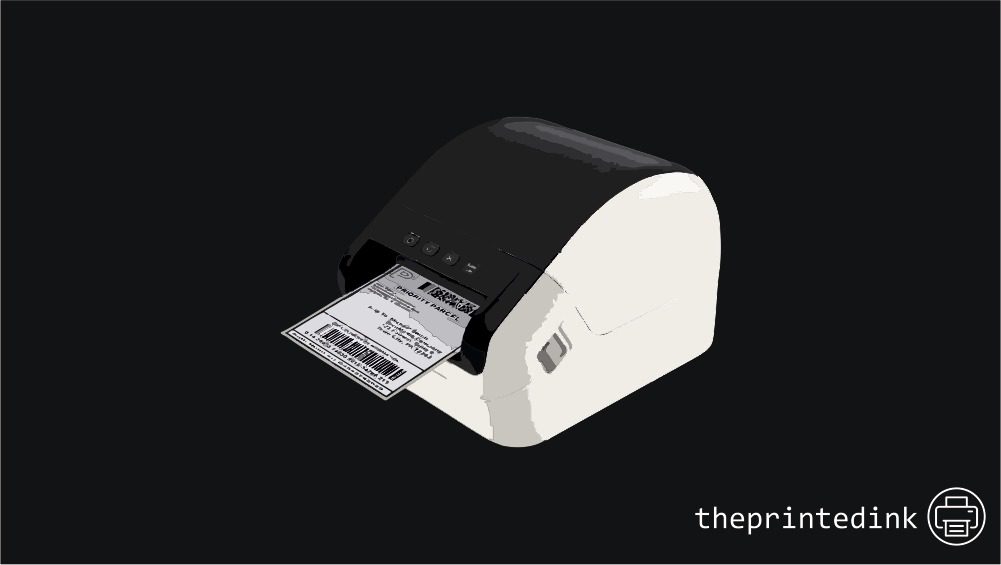When it comes to sublimation printing, the sublimation paper sizes you use play a great role.
Whether you’re creating signage, apparel or promotional materials, sublimation papers provide superior results in less time than ever before – making it perfect for anyone with a subconscious desire for innovation.
In this article we’ll explore the different types of sublimation papers available as well as their respective features and benefits. We’ll also discuss some tips on how to choose the right size and format for your project’s specific needs. By the end of this piece, you’ll have all the information necessary to make informed decisions about which paper is best suited for any given situation.
Ready to get started? Let’s dive into what makes sublimation paper sizes so unique!

Contents
1. What Is Sublimation Paper?
Sublimation paper is a unique material that enables you to transfer images onto products with near-photographic quality. It works by using special inks which are heated and pressed onto fabric, plastic, or coated metal items such as mugs or keychains. This technology can be used to create vibrant designs that won’t fade over time like traditional screen printing would. The results are long lasting and durable, making it an ideal choice for businesses looking to expand their product range with custom promotional items.
What makes sublimation paper especially useful is the wide variety of sizes available; from small sheets suitable for logos and textiles through to large rolls perfect for creating banners and signage. No matter what size item you need printed on, there’s sure to be a sublimation solution out there! With great flexibility comes excellent versatility too – this type of paper isn’t limited just to t-shirts but can also be used on mouse pads, puzzles, coasters, photo frames and more.
Whether you’re after something eye-catching for your next business event or personalised gifts for friends & family, sublimation paper has got you covered. Add some colour into your life today – explore all the possibilities that this amazing material brings!
2. Types Of Sublimation Paper
First off, there is standard sublimation transfer paper. This type of paper has an excellent release layer which helps ensure clean and crisp graphics are transferred onto fabric or other materials.
It also comes in different sizes such as 8×10 inches, 11×17 inches, 13 x 19 inches, A4 size and more depending on your needs.
Next up we have light garment transfer paper; designed specifically for transferring lighter coloured fabrics like white t-shirts and mugs. It features special coating technology that allows images to be printed easily while providing vibrant colours and sharp details.
Finally, if you’re looking for something extra durable then opt for specialty heat press transfers. These papers come precoated with a strong adhesive backing so they stick firmly to any surface without cracking or fading over time – perfect for those items that will get frequent use!
No matter what type of project you’re working on, there’s sure to be a great option out there amongst all these amazing sublimation papers – from simple everyday tasks to complex custom designs – making anyone’s creative dreams possible!
3. What Sublimation Paper Size Should I Use?
Choosing the correct sublimation paper size can be a daunting task. However, it doesn’t need to be! Here are some helpful tips and tricks that will help you choose the best size for your project:
• Consider what type of printer you have – different printers have different allowable sizes; make sure to check before purchasing!
• Measure twice, cut once – accurately measure your item so you don’t end up wasting time or money on unnecessary paper.
• Be mindful of budget constraints – buying the right amount of paper upfront is both economical and efficient.
• Get creative – why not try experimenting with different sizes? You may find a unique perspective that works better than expected.

No matter what size you pick, there’s always something new to explore when it comes to sublimation printing. With these tips in mind, you’ll be able to confidently select the perfect size for your projects without any stress or worry. So go ahead and get started – happy crafting!
4. Printer Settings For Different Size Papers
When it comes to printing on sublimation paper, the size you choose is only one part of the equation. Printer settings can make a big difference in the quality of your finished product as well! Here are three essential printer settings for different paper sizes:
• Resolution – Be sure to check your printer’s resolution and adjust accordingly based on the type and number of colors that you plan to print. Higher resolutions will provide more detail but take longer to process.
• Print Quality – Selecting higher print quality often means choosing thicker ink layers which increase color saturation and vibrancy. This setting should be adjusted depending on whether you need an image with high or low contrast.
• Color Palette – Depending on what kind of project you’re working on, using a specific color palette may be beneficial. For example, if you’re creating artwork for apparel then it’s important to select a palette that is compatible with dyesub printers.
Making sure all these settings are correct before printing helps ensure that your work looks great when printed out! To get even better results, consider calibrating your monitor so that the colors displayed match those produced by your printer. Making this effort pays off in spades when you see how beautiful and vibrant your prints turn out!
5. Tips For Working With Different Size Papers
Working with different paper sizes can be a great way to explore your creativity. Whether you’re printing photos or experimenting with digital art, knowing how to set up the right printer settings is essential for getting good results. Here are some tips that will help make the process easier.
• Make sure to check which size papers your printer supports. Not all printers accommodate larger formats such as A3 and above, so it pays to do your research ahead of time.
• When you have chosen the right paper size for the job, double-check that your artwork is correctly sized before sending it off to print. This is especially important when working with large format papers because any mistake here could end up being very costly!
• Use the correct paper type for the intended purpose. Sublimation printing requires special inkjet sublimation papers; using regular photo paper won’t give you satisfactory results.
By following these simple guidelines, you’ll be well on your way to achieving excellent results with whatever paper size you choose. With practice comes mastery – keep experimenting and learning new techniques until you find what works best for you!
6. Troubleshooting For Sublimation Paper Size Issues
Troubleshooting paper size issues with sublimation printing can be a challenge. Here are some useful tips to get you started:
- Double check the measurements of your artwork before submitting it for print– make sure there’s enough bleed and margin space around each edge. This’ll help avoid any unnecessary adjustments later on.
- Use high quality papers that are specifically designed for sublimation, as these will produce better results compared to standard ones. You should also ensure the printer settings match the paper type, too!
- If you’re having trouble getting a consistent image across all sizes of paper, try using a template or pre-made design so that everything is already scaled correctly and fits properly onto the page.
By taking these steps when troubleshooting issues related to different sized papers for sublimation printing, you can quickly identify problems and course correct if needed – ensuring that your projects come out looking sharp every time! With this knowledge in hand, let’s take our creative ideas into action!
Frequently Asked Questions
How Much Does Sublimation Paper Cost?
When it comes to printing and creating vibrant, long-lasting artwork, sublimation paper is the perfect choice. It’s an affordable option that produces stunning results – but how much does it cost? Well, depending on size and quantity, you can get great deals on sublimation paper.
For smaller projects or personal use, a single A4 sheet of sublimation paper can be as little as $1.50! However for bigger designs with multiple colors and layers you may need larger sized sheets; these are more expensive but still offer excellent value for money. For example, an A3 sheet is around $2.85 while an A2 sheet can range from $5-$10 per piece depending on supplier and quality.
If you’re producing large batches of prints then buying in bulk really pays off; most suppliers will offer discounts when purchasing several boxes at once so it’s worth shopping around for the best deal. Quality should also factor into your decision – higher priced papers often have better color reproduction resulting in sharper images that last longer too! As such investing in high-quality materials could end up saving you money in the long run.
Does The Size Of Paper Affect The Quality Of Sublimation?
The size of paper you use for sublimation can have a major impact on the quality of your finished product. While most people focus mainly on cost, it is also important to consider how large or small a piece of paper needs to be in order to achieve the desired result. Here are five key points to help you decide which size will work best:
1) How big do you need the image to be? If you’re looking for an oversized print, then larger sizes may be required.
2) What kind of material are you using? Different materials respond differently when exposed to heat and pressure, so it’s important to factor this into account.
3) Is there enough room around the edges for cutting and trimming? You want some extra space just in case you need to adjust anything once the project has been completed.
4) Are there any other limitations that might affect what size is available? For instance, if you’re working with limited space or equipment capabilities, then certain sizes simply won’t work.
5) Does the size matter aesthetically? Sometimes, smaller prints can look more polished than larger ones – it all depends on your individual vision and design goals.
In short, while cost should still remain a priority when selecting sublimation papers, careful consideration must also be given as to whether or not specific dimensions are necessary for achieving excellent results from your projects. Making sure that each element lines up properly–including size–will ensure that every single one of your creations looks its absolute best!
What Is The Best Paper Size For A Specific Project?
When it comes to sublimation projects, every detail matters. But what about paper size? Is there an ideal size for maximum quality results? The answer is yes – the best paper size for a specific project depends on several factors.
First and foremost, consider your desired outcome. Do you want vibrant colors or smooth gradients? Are you looking to make large posters or small signs? Knowing the end goal will narrow down your options significantly. Once that’s determined, focus on selecting a paper size that meets your needs and budget. You can always trim any excess material later if necessary.
For those seeking professional-level results without breaking the bank, 8.5 x 11 inch sheets are typically both affordable and effective – perfect for creating mugs, t-shirts, magnets and more! For larger prints such as banners or wall art though, 13 x 19 inches will provide better coverage with less graininess than smaller sizes would offer. Ultimately, choosing the right paper size is key to achieving exceptional outcomes with sublimation projects of all shapes and sizes.
So go ahead – unlock new possibilities by experimenting with different papers! Who knows what beautiful creations await when you find just the right fit?
What Are The Differences Between Sublimation Paper And Other Types Of Paper?
Sublimation paper is a specialized type of paper designed for digital printing. It’s ideal for projects that require vibrant colors, sharp images and detailed text. But how does it compare to other types of paper? Let’s explore the differences between sublimation paper and others on the market.
First off, compared to other papers, sublimation paper offers superior vibrancy when it comes to color reproduction. The inks used in this type of printer are formulated specifically for transfer onto fabric or similar materials—meaning you get greater intensity with each print job. Additionally, since the ink bonds directly into the material instead of sitting atop it like conventional inks do, there’s no risk of fading over time or washing away—which makes it perfect for t-shirts, mugs, and so much more!
On the flipside, because this type of paper requires heat transferring rather than just regular printing, it can be a bit pricier than your typical printer paper. And although not all printers are compatible with sublimation technology (it usually requires special hardware), those who have made the switch find that upgrading their equipment pays dividends down the road due to increased productivity and efficiency gains.
In short: if you’re looking for long-lasting results with bold colors that won’t fade away–sublimation paper is an excellent choice. With its ability to reproduce complex designs quickly and efficiently while also lasting longer than traditional media–it’s definitely worth investing in this specialized form of printing.
Can I Use Sublimation Paper With Any Printer?
Sublimation paper is an essential tool for anyone looking to create vibrant, long-lasting prints. But if you’re new to the world of sublimation printing, you may have a few questions – like can I use this special type of paper with any printer? The answer isn’t so cut and dry.
Let’s start by taking a look at what makes sublimation paper unique. This specialized paper has been designed to work in combination with heat transfer printers that utilize dye sublimation ink. The combination of high temperatures and pressure causes the ink to vaporize into gas, which then transfers directly onto polyester or polymer surfaces without leaving behind a residue. That means there’s no need for additional lamination or other treatments – making it perfect for creating t-shirts, mugs, hats and more!
So when it comes down to using sublimation paper with any printer, the verdict really depends on your set up. If you’ve got a heat transfer printer equipped with dye sublimation ink cartridges, then go ahead and fire away! But if not, you’ll need to invest in some new hardware before being able to take advantage of this amazing technology. Of course, once you do make the switch you won’t be disappointed – beautiful designs ready in minutes!
With all its possibilities and potential uses, investing in sublimation paper could be just the thing your creative project needs. So don’t let questions about compatibility get in your way – explore what this exciting technology has to offer today!
Conclusion
In conclusion, sublimation paper is a great tool for creating various projects. The cost of the paper depends on the size and type, but it’s generally an affordable option. Additionally, the size does affect the quality of the print; larger sizes tend to produce higher-quality prints. When selecting a paper size for your project, consider what you’ll be working on and how much detail you want in the final product.
Sublimation paper has advantages over other types of paper due to its special coating that helps ink transfer quickly and efficiently onto materials such as fabric or mugs. However, not all printers are compatible with this type of paper, so make sure yours can handle it before making any purchases.
Overall, sublimation paper is an excellent choice for anyone looking to create high-quality images with ease. Its affordability, wide range of sizes and compatibility with many different printers make it an attractive solution for many applications. With some research and careful consideration about which printer and size will suit your needs best, you can get professional results every time!






